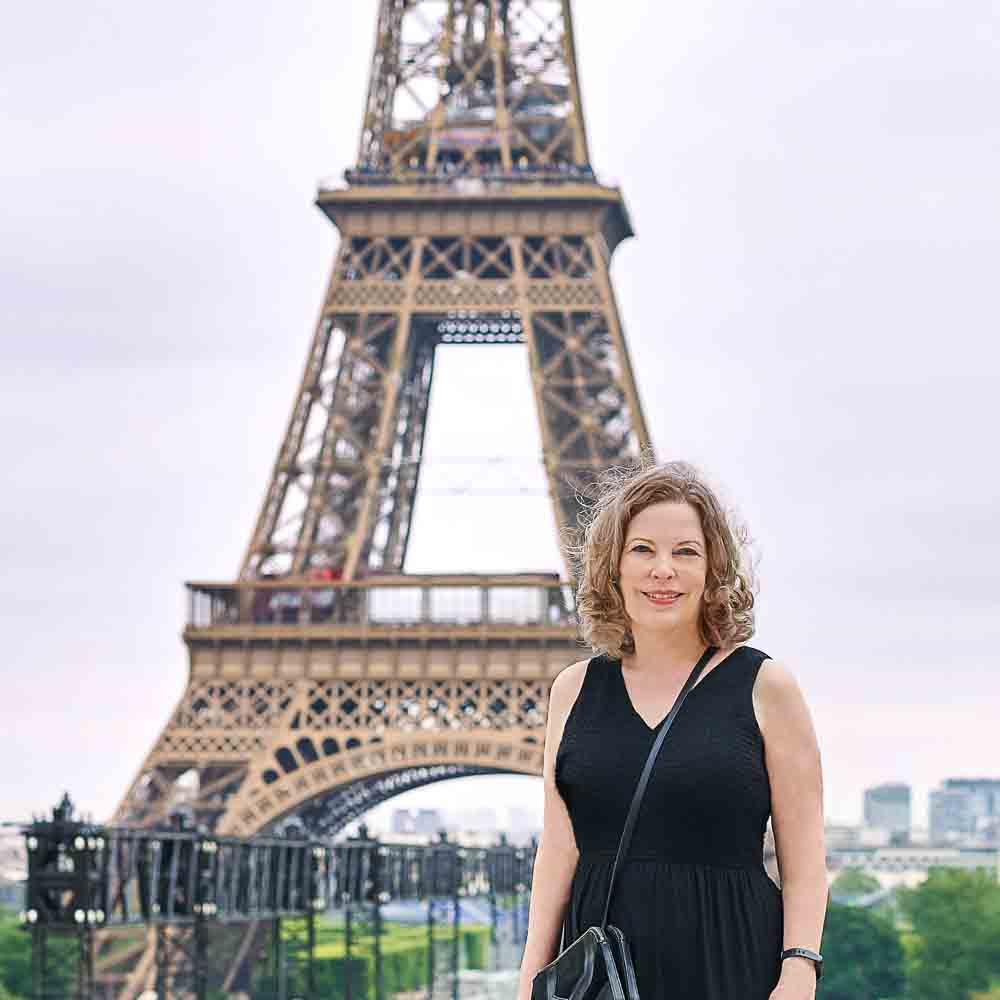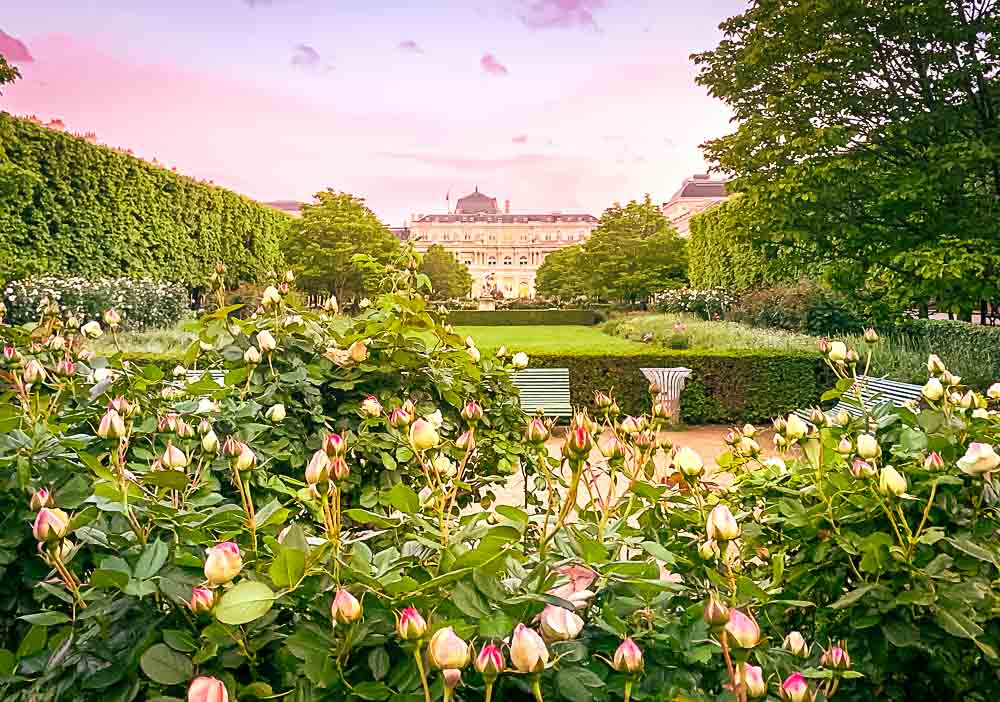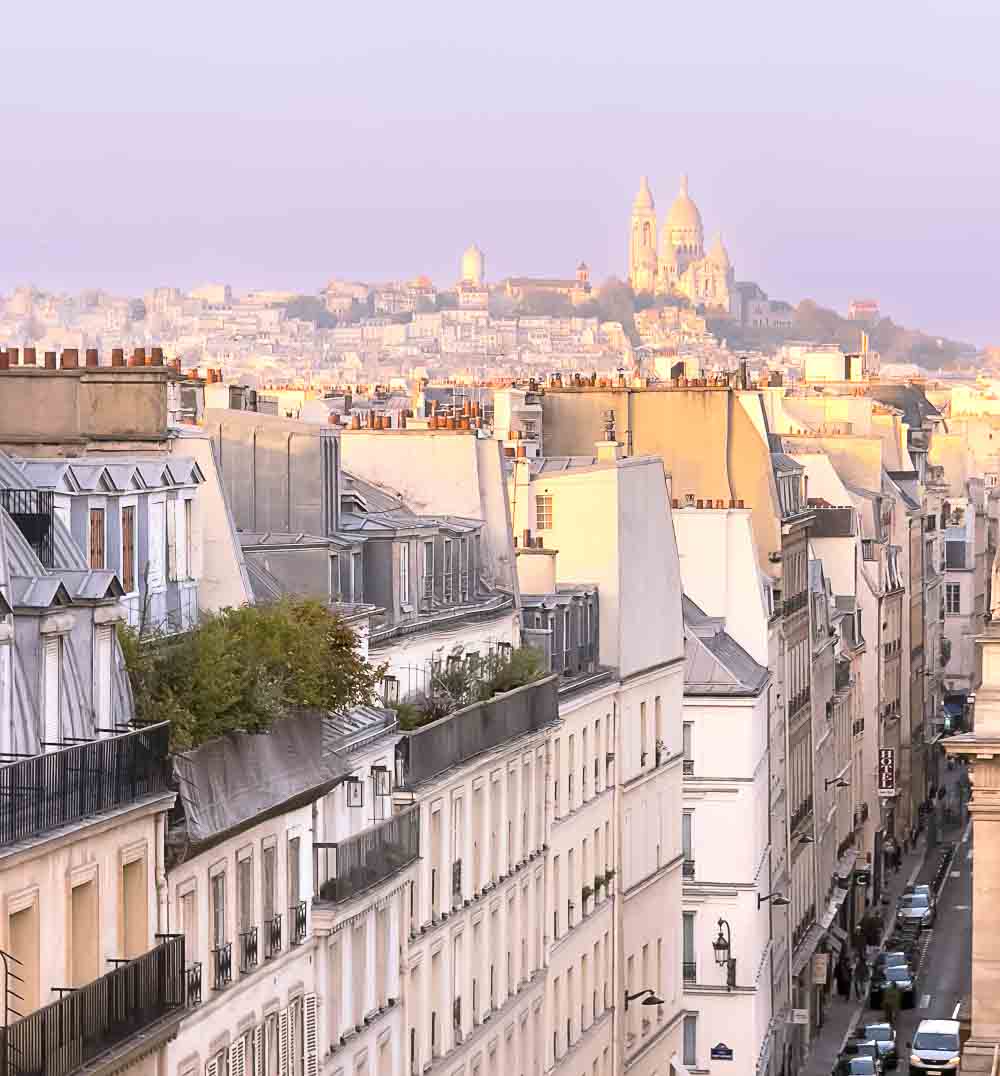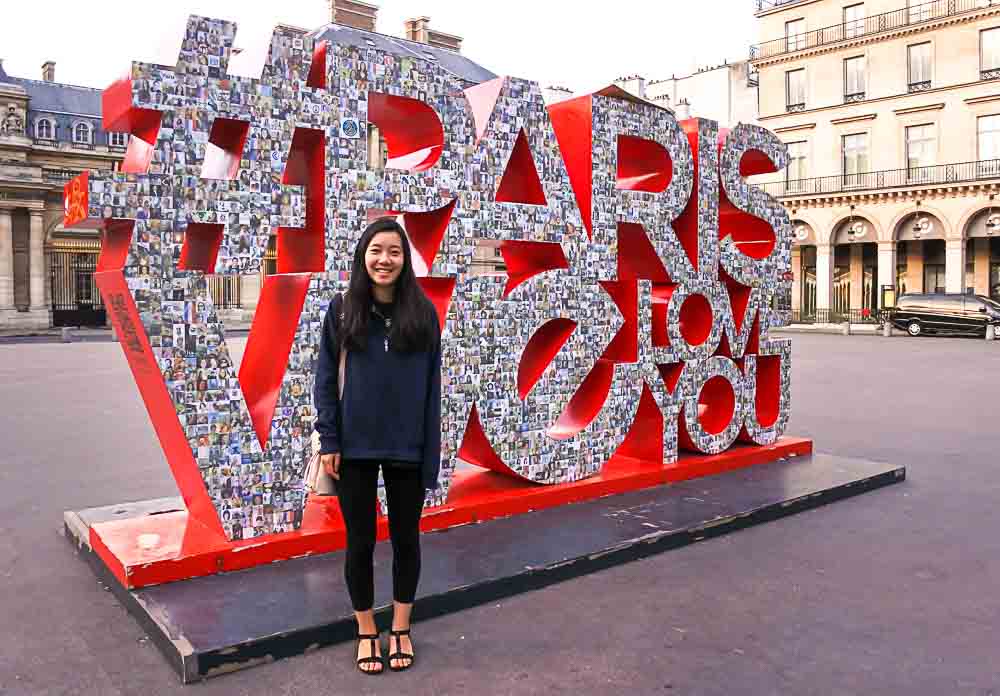The Orsay Museum (Musée d'Orsay), located on Paris's Left Bank in a repurposed Belle Époque train station overlooking the Seine, sometimes gets overshadowed by the much larger and more famous Louvre Museum just across the river.
But the Orsay's many famous paintings by Impressionists and Post-Impressionists as well as other art treasures absolutely earn it a spot on your Paris "bucket list" - in fact, many visitors say it's their favorite museum in the city.
How to Get Orsay Museum Tickets
- Best of Orsay Museum Small Group Tour & Tickets - An expert guide shows you the most important exhibits and brings the art to life for you
- Reserved Access Tickets - Get priority admission - these sell out quickly so book at least a week in advance
- Paris Museum Pass - Get free skip-the-line admission to the Orsay, the Louvre, and about 60 other Paris attractions; choose a 2, 4, or 6 day pass
The Orsay is where you'll see the world's best collection of Impressionist and Post-Impressionist art - masterpieces by Vincent Van Gogh, Claude Monet, Paul Cézanne, Édouard Manet, Edgar Degas, Paul Gauguin, Pierre-August Renoir, Mary Cassatt, and other famous artists.
Plus, you'll find a lot more to see and do here in addition to the art, including a few surprises.
So take a look at my recommendations for 7 cool things to see and do at the Musée d'Orsay plus a lot more tips about how to enjoy it. And remember to book your tickets or a tour in advance because while the Orsay is not as crowded as the Louvre Museum, it is the second most popular art museum in Paris.
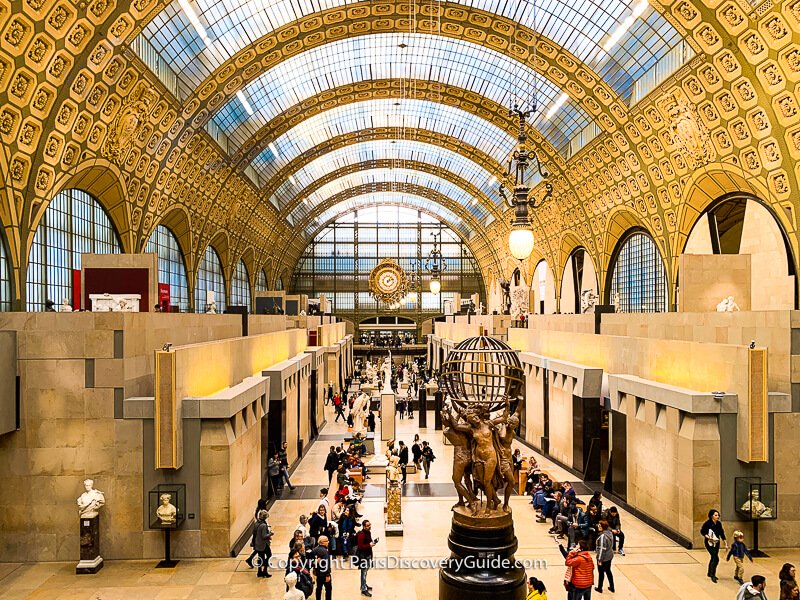
Article Contents
I've packed a lot into this article - so use the links to go directly to what interests you.
- 7 Cool Things to See & Do at Musée d'Orsay
- How to Visit & Tour Musée d'Orsay
- The Museum's History: From Train Station to Museum
- Which is Better - Musée d'Orsay or the Louvre?
- Musée d'Orsay Fun FAQs & Facts
- Orsay Museum Visitor Information: Hours, Location, & Map
- Where to Stay near the Orsay Museum
- Where to Eat near Musée d'Orsay Museum
- More to See & Do near the Orsay
Top photo: Musée d'Orsay, (c) Paris Discovery Guide
Paris Discovery Guide is a reader-supported publication. When you buy through my links, I may earn a small commission at no additional cost to you. Merci beaucoup for your support!
7 Cool Things to See & Do at Musée d'Orsay
1. Feel Dazzled by the Orsay Museum's Famous Paintings

To experience the mesmerizing interplay of colors, light, and shapes on canvases by Impressionist and Post-Impressionist artists such as Monet, Van Gogh, Matisse, and many, many more, head straight to the galleries on the museum's 5th level where you'll find room after room filled with stunning masterpieces.
You may have seen photos or prints of them before - but at least for me, seeing them in "real life" is a whole different and much more satisfying experience.
Pro Tip: Curators at the Orsay move and swap out some of the art daily, and even large displays such as Impressionist paintings can shift to different floors. Take one of the free museum brochures as you enter if you want to know current locations of collections, and ask at the Reception Desk if you need more specific information.
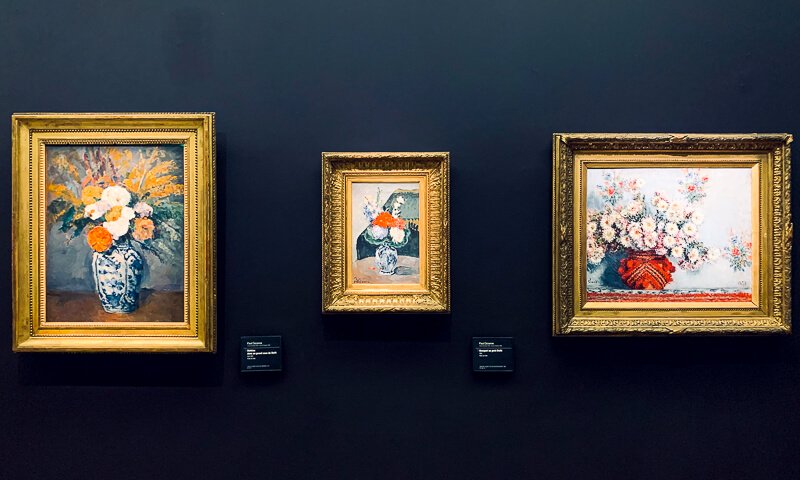
These are the paintings that rightfully make the Orsay famous, as the crowds of fans surrounding the photos demonstrate, so for some paintings - almost anything by Van Gogh, for example - you'll need patience to maneuver your way to the front of the crowd to get a good view.
But the effort is worth it.
Why Seeing Original Impressionist Paintings at the Orsay Makes a Difference
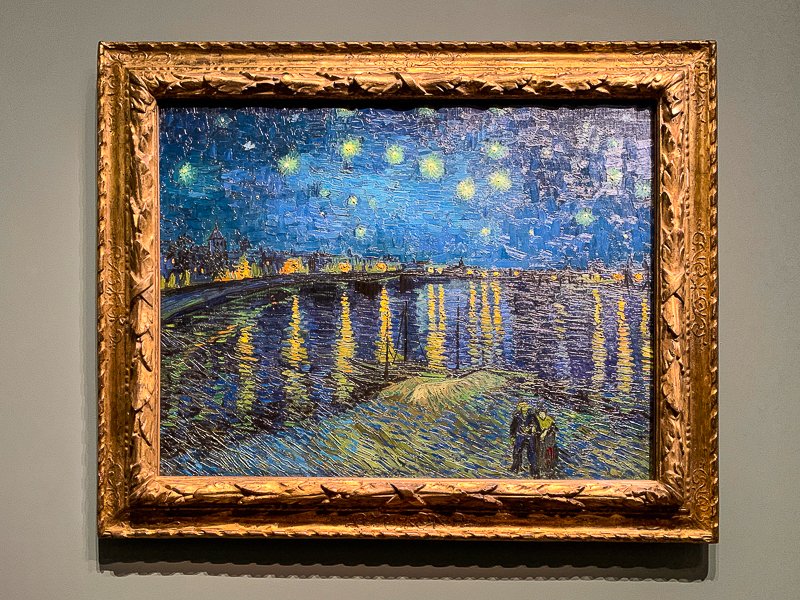
No matter how many times you may have seen photographs or prints of these paintings, the experience of viewing the originals is so much better. A camera can't adequately capture the nuances of color, reflections of light, and the 3-dimensionality of brush strokes on canvas you'll see in real life.
The Orsay's lighting is superb, and the museum lets you to get up close to these masterpieces without risking the embarrassment of setting off the alarm system. (The downside to this is that, well, visitors do get up close and stay there for awhile as they soak in the details, so you may have to wait longer than you'd like for your turn.)
How Did Impressionism Become So Popular?
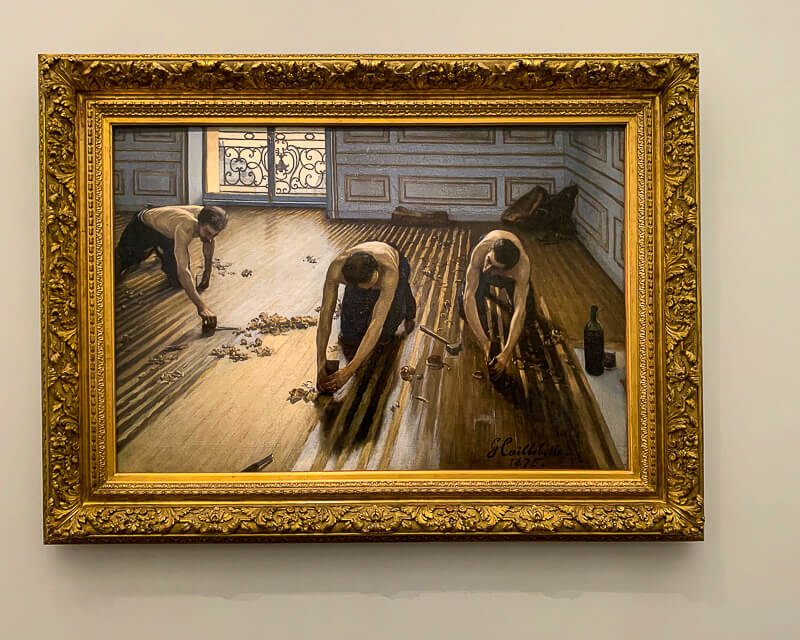
Today, Impressionist art in no way seems radical or even innovative because we're used to it - it's part of our cultural landscape. Even if we don't view Renoirs or Monets on a daily basis (and how many people do?), we see their influence in colorful, light-filled images on greeting cards, advertisements, and Instagram.
But as you view these masterpieces in the Orsay, think about this: when Impressionism burst upon the Parisian cultural scene in the early 1860s after a group of young French painters including Monet, Renoir, Alfred Sisley, and Frédéric Bazille plus the somewhat older Édouard Manet rebelled against the rigid constraints of "Academic" painting then in vogue, the establishment artists felt rocked to their core.
How Does Impressionist Art at the Orsay Different from Older Styles of Art at the Louvre Museum?

For over 3 centuries, the French Académie des Beaux-Arts defined what art should look like by blocking "deviant" artists from showing their work at the prestigious annual Salon de Paris art show, a source of coveted prizes, commissions, and publicity.
The Academic style favored by the Academy favored realistic depictions of historical or mythological scenes, preferably in mostly dark colors often topped with a yellowish-brown glaze. (And yes, you can see a lot of that at the Louvre, in case you're wondering about differences between the art in Paris's two most prestigious museums.)
In contrast, Impressionist artists embraced brighter, lighter colors with spontaneous (vs controlled) brush strokes to create subjective "impressions" of landscapes and contemporary life.
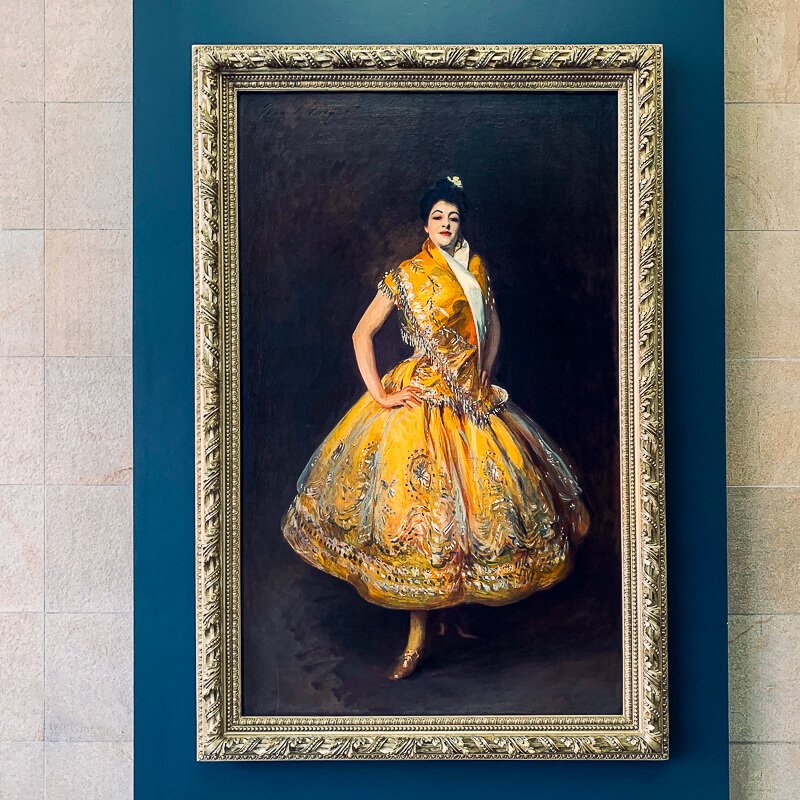
How Did Napoleon III Contribute to the Rise of Impressionism?
Unsurprisingly, the Academy barred most of the Impressionists' work from being shown at their 1863 Salon, but after Napoleon III (who had seized power and appointed himself as Emperor in 1851) looked at the rejected paintings, he decreed that the public should judge.
Even with Napoleon III's intervention, the first Paris exhibition of Impressionist art did not take place until 1874 when 30 artists banded together to put on their own show. Most critics panned it - but the public loved it because they felt it resonated with modern life.
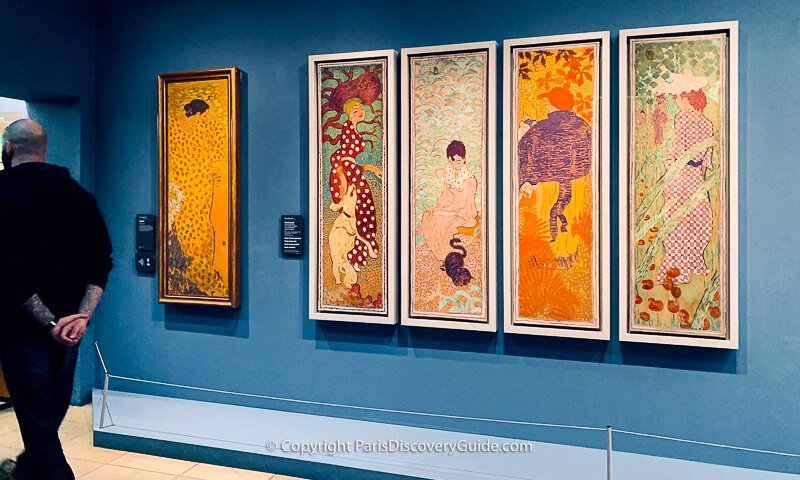
Why is Impressionism Still So Popular Today?
One reason why Impressionist art remains so popular today is its accessibility. We don't need art history expertise to appreciate the joie de vivre in the interplay between light and colors.
We can also easily relate to the everyday scenes and places; in fact; stroll down almost any street in Paris, and you'll see outdoor cafes just like the ones the Impressionists painted.
Stand on the banks of the Seine River on a dark night and you can feel the same magic Van Gogh tried to capture as he painted the stars over the Rhône River. (You can try the same thing with your phone camera - I do this all the time myself.)
If you're a Monet fan, make the 45-minute trip to his home in Giverny, and you'll see the pond with the water lilies that he featured in some of his most famous works of art. Although you'll see a few of his paintings at the Orsay, the water lily paintings are displayed across the Seine at the Musée de l'Orangerie while the biggest collection of his works is at Musée Marmottan, well-worth the trek to the 16th arrondissement.
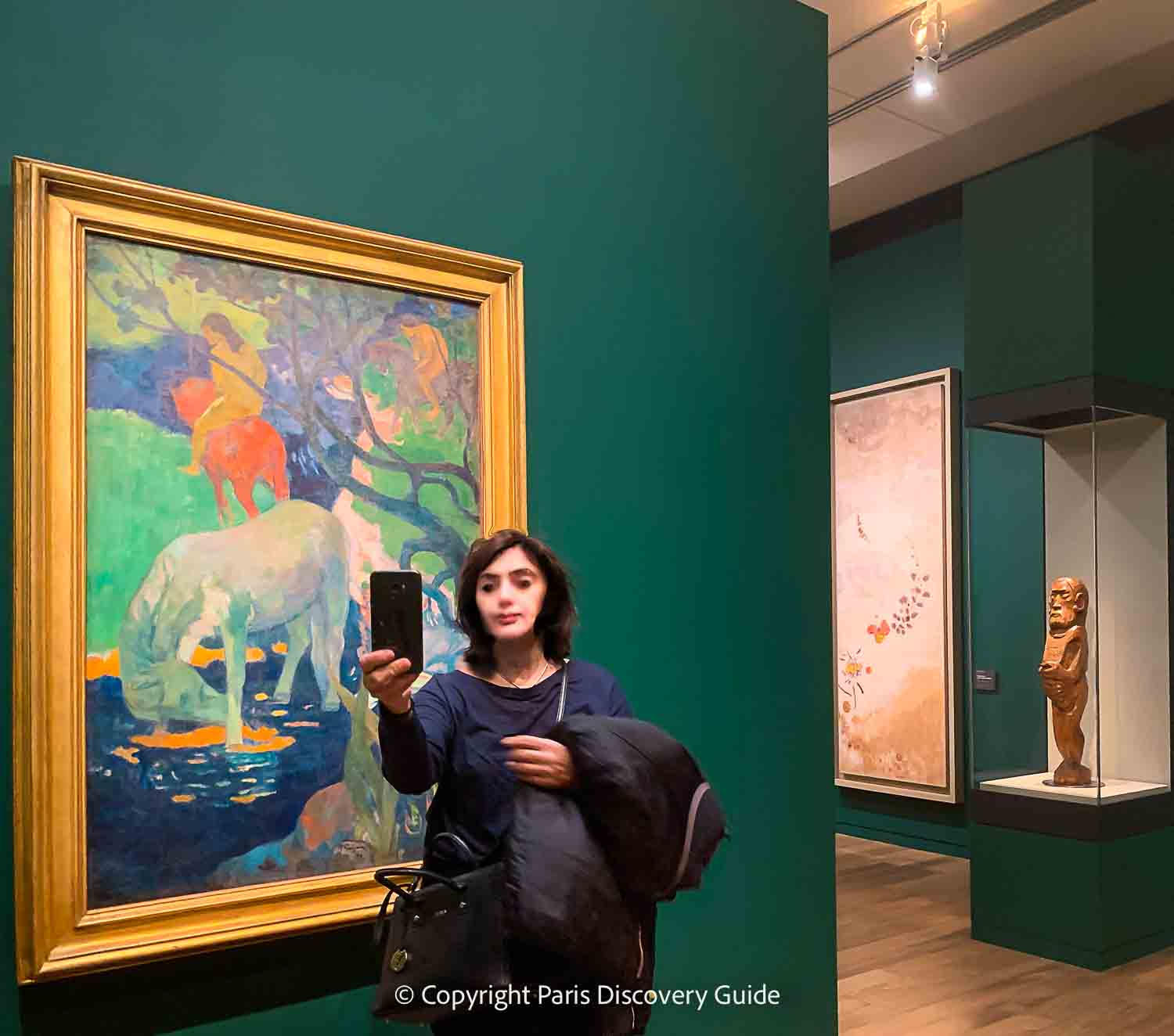
What Happened After Impressionism?
By the time Impressionism reached its peak around the mid-1880s, artists were already pushing its boundaries as the Post-Impressionism movement emerged.
Artists initially continued to focus - mostly - on real-life subjects, but they applied their paint thicker, choose more vibrant and less unnaturalistic colors, and played with shapes, often deliberately distorting or changing "reality" and sometimes using geometric and abstract forms.
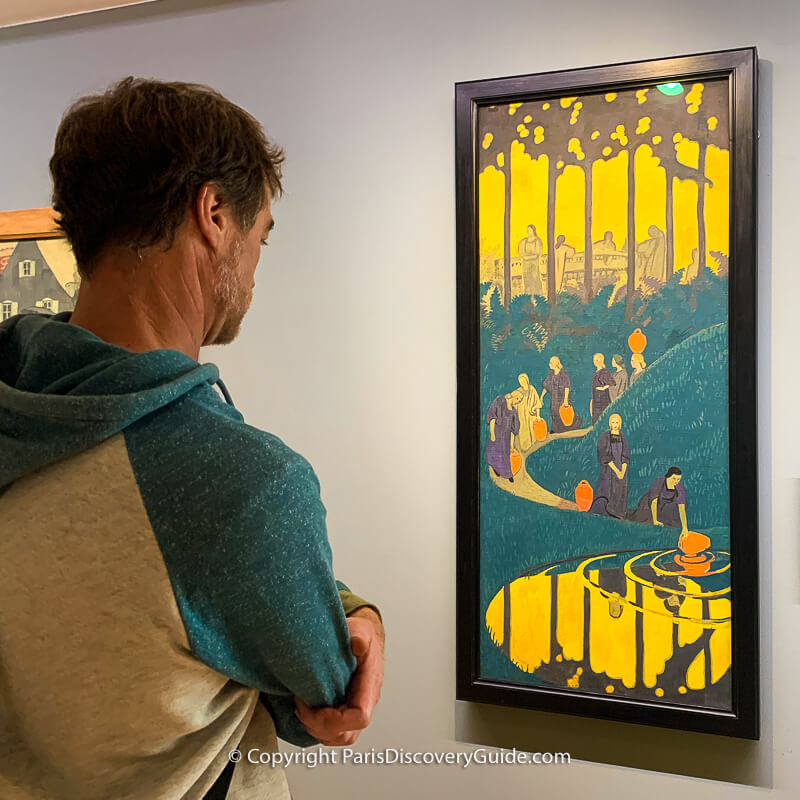
As you will see as you walk through Musee d'Orsay's galleries featuring Post-Impressionist art, this was not a unified movement or a specific style.
Some Post-Impressionist artists focused on blocks of color, rendering their subjects on a flat plane. Others fell under the spell of Japanese woodblock prints. Still others turned to decorative arts.
An influential group of young French artists who called themselves Les Nabis turned away from painting what they saw in real life to making their art about symbols, metaphors, and meanings.
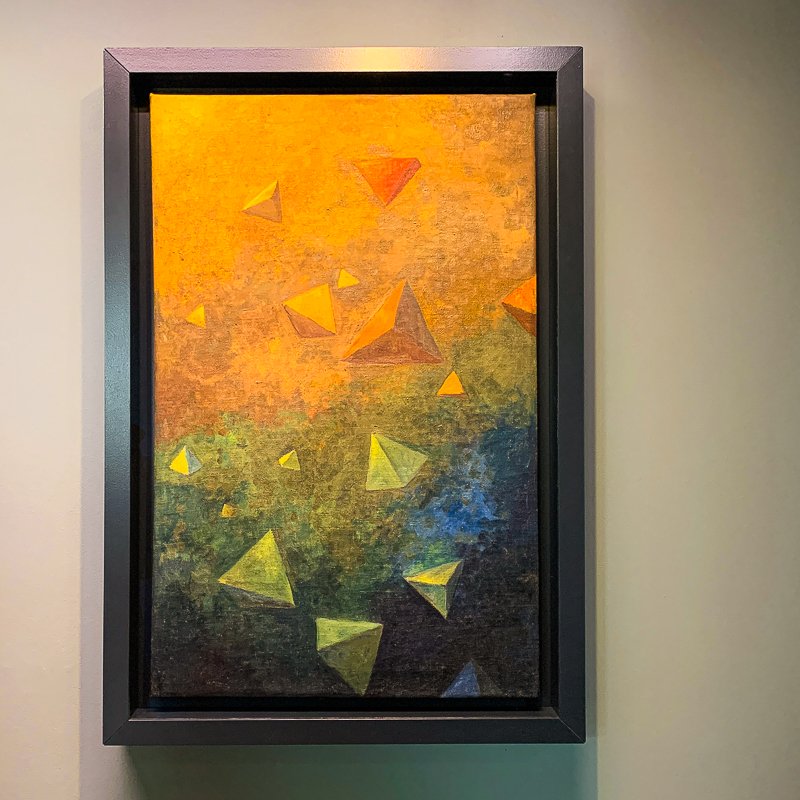
Look closely, and you can see the beginnings of Cubism, Fauvism, Expressionism, and Surrealism as the 1890s gave way to the 20th century and ushered in what we regard as the modern art period.
Get Your Orsay Museum Tickets Now
- Best of Orsay Museum Small Group Tour & Tickets - An expert guide shows you the most important exhibits and brings the art to life for you
- Reserved Access Tickets - Get priority admission - these sell out quickly so book at least a week in advance
- Paris Museum Pass - Get free skip-the-line admission to the Orsay, the Louvre, and about 60 other Paris attractions; choose a 2, 4, or 6 day pass
2. Explore Musée d'Orsay's Stunning Art Nouveau Furniture
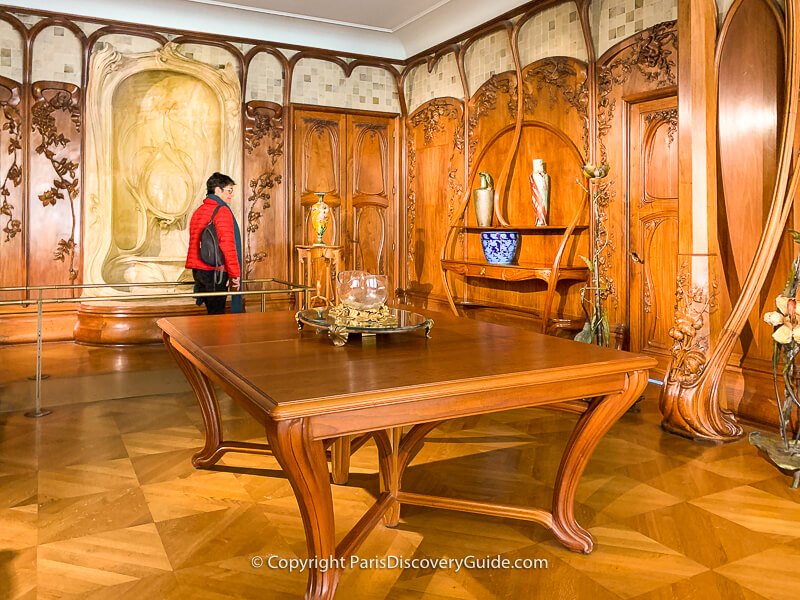
Although best known for its art collections, the Orsay Museum's Decorative Arts collection of furniture and decorative items, especially for the Art Nouveau period with its flowing lines and organic shapes based on nature, is unsurpassed in Paris. (Although the Musée des Arts Décoratifs at the northwestern end of the Louvre runs a close second - so don't miss it if you love Art Nouveau.)
Like Impressionism, Art Nouveau grew out of a rebellion against the academic approach to architecture and interior design and decoration, and flourished for a relatively short time between 1890 and 1910, reaching its peak at the 1900 Paris International Exposition.
By the time World War I ended, so had Art Nouveau, replaced seemingly overnight by Art Deco and Modernism.
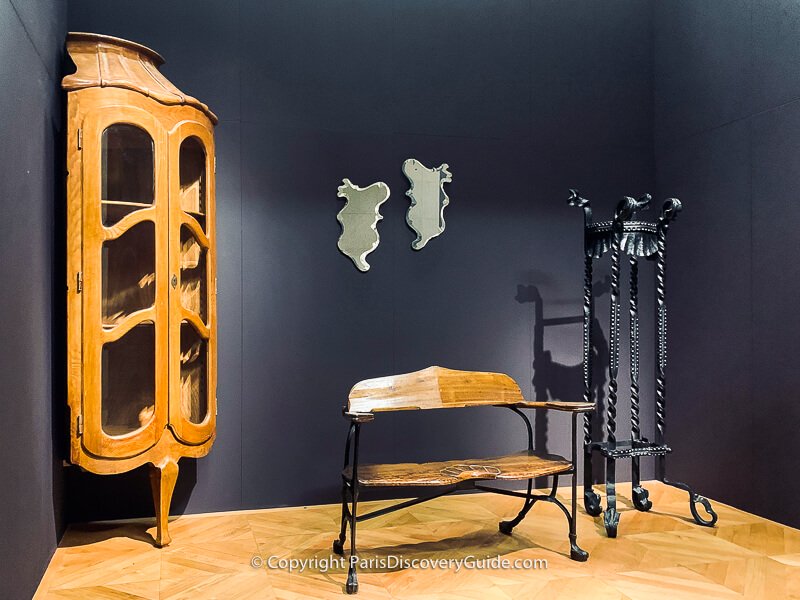
To develop its Art Nouveau Decorative Arts collection, the Orsay acquired pieces from museums all over the country prior to its opening in 1986, and has continued to enrich its holdings since that time with superb examples by the French and international giants of this movement.
You'll be dazzled by the huge variety of pieces from the masters of this movement: Hector Guimard, Alexandre Charpentier, Louis Majorelle, Emile Gallé, Carlo Bugatti, Victor Horta, François-Rupert Carabin, Alphonse Mucha, Louis Tiffany, Charles Plumet, René Lalique, Eugene Gaillard, Émile Gallé, Jean Dampt, and too many more to name.
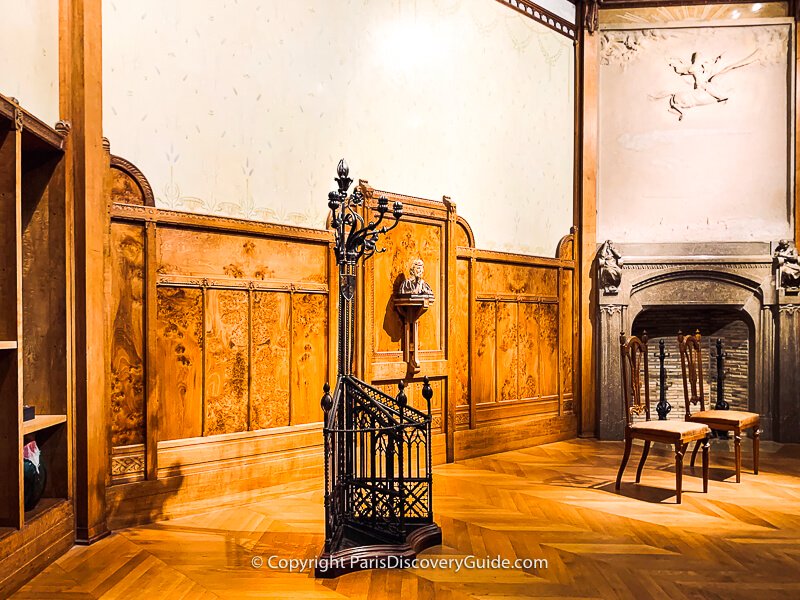
The Orsay Museum currently displays pieces from its now-vast Art Nouveau collection in galleries and large spaces on the Ground floor and Second level.
Even if you only have enough time for a quick walk-through, do it, because the Musee d'Orsay's collection is the best in the world.
If your schedule has more flexibility and are wondering how long you might spend there, I can tell you that my typical visits in this part of the Orsay run about 1-2 hours because I love Art Nouveau.
3. See the Statue of Liberty Up Close at the Orsay
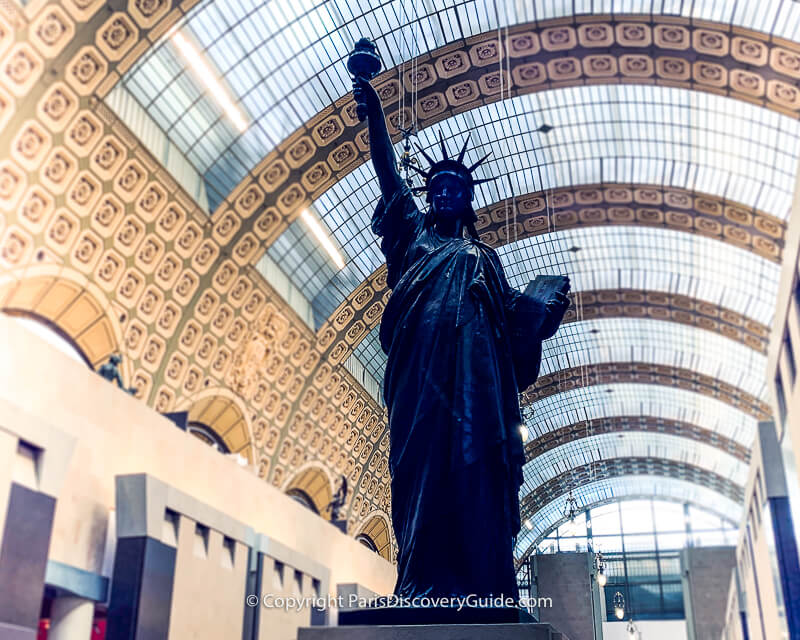
Since 2011, the museum has had its own Lady Liberty - look for her soon after you pass through the entrance.
This one, like the Statue of Liberty in New York Harbor given to the United States by the people of France in 1886, was created by Frédéric Bartholdi - but unlike the 151 foot (46 m) tall original, this one measures not quite 10 feet tall (slightly under 3 m) and was created more than a decade after the original.
Fun Fact: You can see at least two (and sometimes three) other Statues of Liberty in Paris, plus a full-sized golden replica of her torch called the Flame of Liberty near the Pont de l'Alma bridge at Place Diana in the 16th arrondissement.
4. Stroll Among More Statues
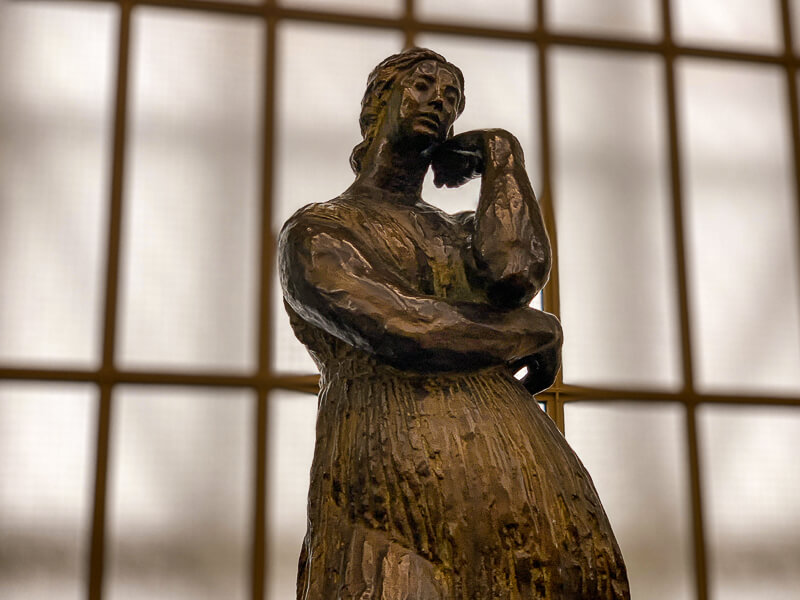
Sculpture as an art form enjoyed immense popularity during the 1800s, not only in galleries and museums but also in private homes where the upper bourgeoisie displayed it to show their elevated status and taste.
As Italian architect/interior designer Gae Aulenti's plans for transforming the space to include 80 galleries on three levels, numerous display platforms and pedestals, and plenty of natural light streaming through the glass roof took shape, it became clear that the new museum would be ideal for viewing sculptural art.
But where could the museum find the sculpture?
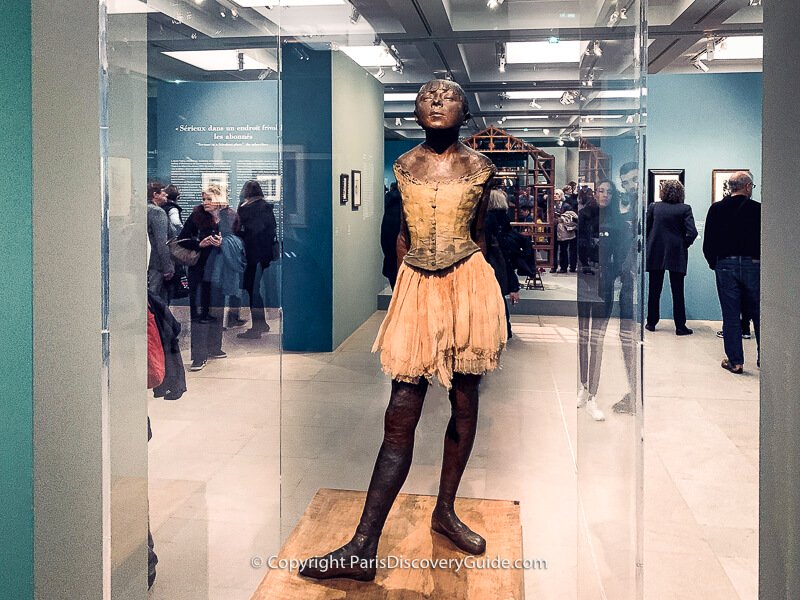
Why Did the Musee d'Orsay Have Trouble Finding 19th Century Sculptures for Its Collection?
By the time the plan to convert the old Gare d'Orsay railway station into an art museum took root in the 1970s, sculpture from the previous century had been out of favor for decades.
Accumulating paintings, photographs, and decorative arts for the new museum was relatively easy (curators simply raided other museums including the Louvre, Jeu de Paume, Musée du Luxembourg, and Musée d'Art Moderne), but pulling together a richly representative collection of sculpture created between 1848 and 1914 took some digging - almost literally, in one case.
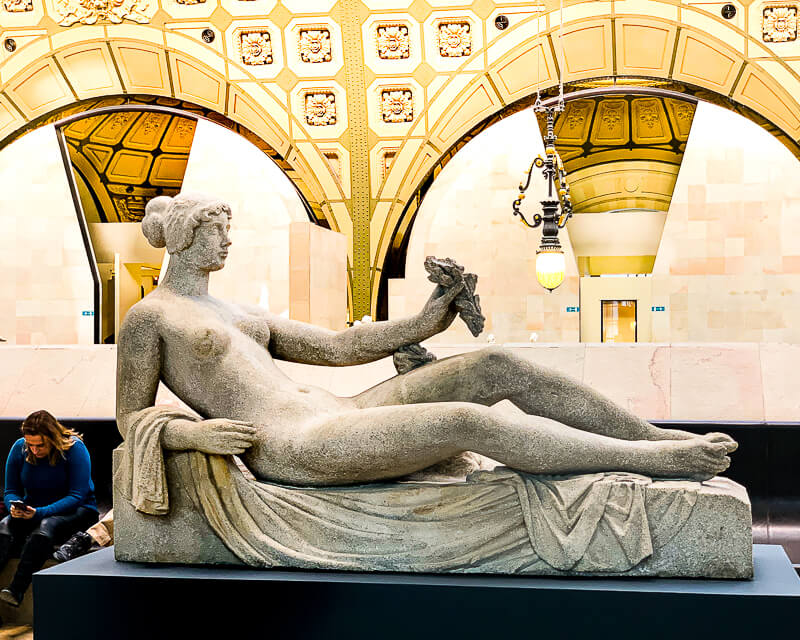
Curators for the future Orsay scoured other museums throughout Paris and the French provinces, often discovering fantastic pieces in forgotten storage areas.
Some sculptural works turned up in unexpected places: the top of a tower in a small town in western France, an old fort in a Paris suburb, abandoned kitchens in a royal chateau once restored by Napoleon.
Acquisitions from private collections yielded other treasures.
What was Musee d'Orsay's Biggest Sculpture Acquisition?
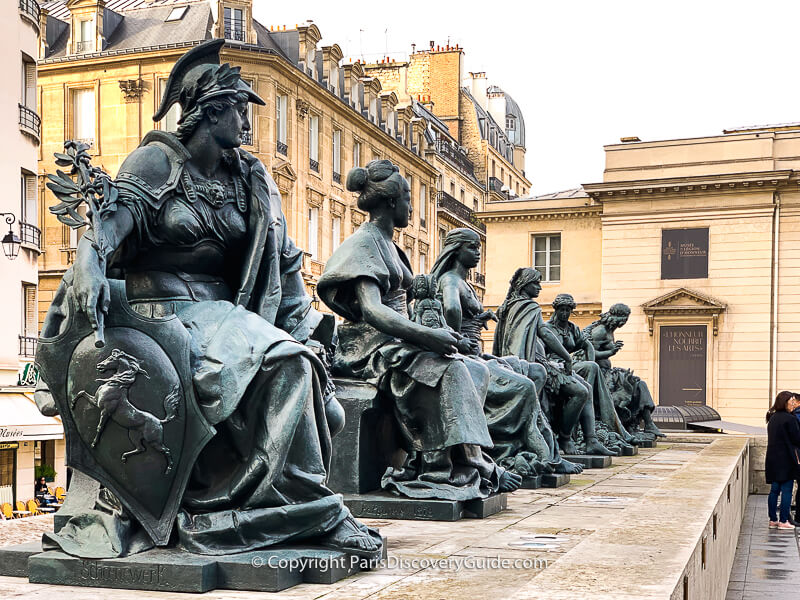
Perhaps the most epic discovery involved rescuing the massive Six Continents statues designed for Trocadéro Palace for the Paris Universal Exhibition of 1878 from a city garbage dump in Nantes. The curators scored all six in exchange for a painting by Sisley.
When you walk by on your way in or out of the Orsay, take a moment to admire them - they really are fantastic.
And of course, spend time admiring the museum's other sculptures, indoor and outside, as well as the statues perched on the building itself.
Get Your Orsay Museum Tickets Now
- Best of Orsay Museum Small Group Tour & Tickets - An expert guide shows you the most important exhibits and brings the art to life for you
- Reserved Access Tickets - Get priority admission - these sell out quickly so book at least a week in advance
- Paris Museum Pass - Get free skip-the-line admission to the Orsay, the Louvre, and about 60 other Paris attractions; choose a 2, 4, or 6 day pass
5. Pose in Front of the Orsay's Giant Clock
Musée d'Orsay actually boasts three enormous clocks: the magnificent gold clock dripping with fancy ornamentation near the building's entrance, plus the two elegant glass and steel-framed clocks inset in the former railway station's towers overlooking the Seine.
Once you're inside the museum, you can easily spot the golden clock on the glass wall near the entrance.
Gare d'Orsay architect Victor Laloux designed the Belle Époque beauty and placed it in a highly visible spot so that no one would miss their train - you can position yourself in front of it (at a distance) for a photo, but getting the perspective right is a little tricky, especially when the museum is crowded.
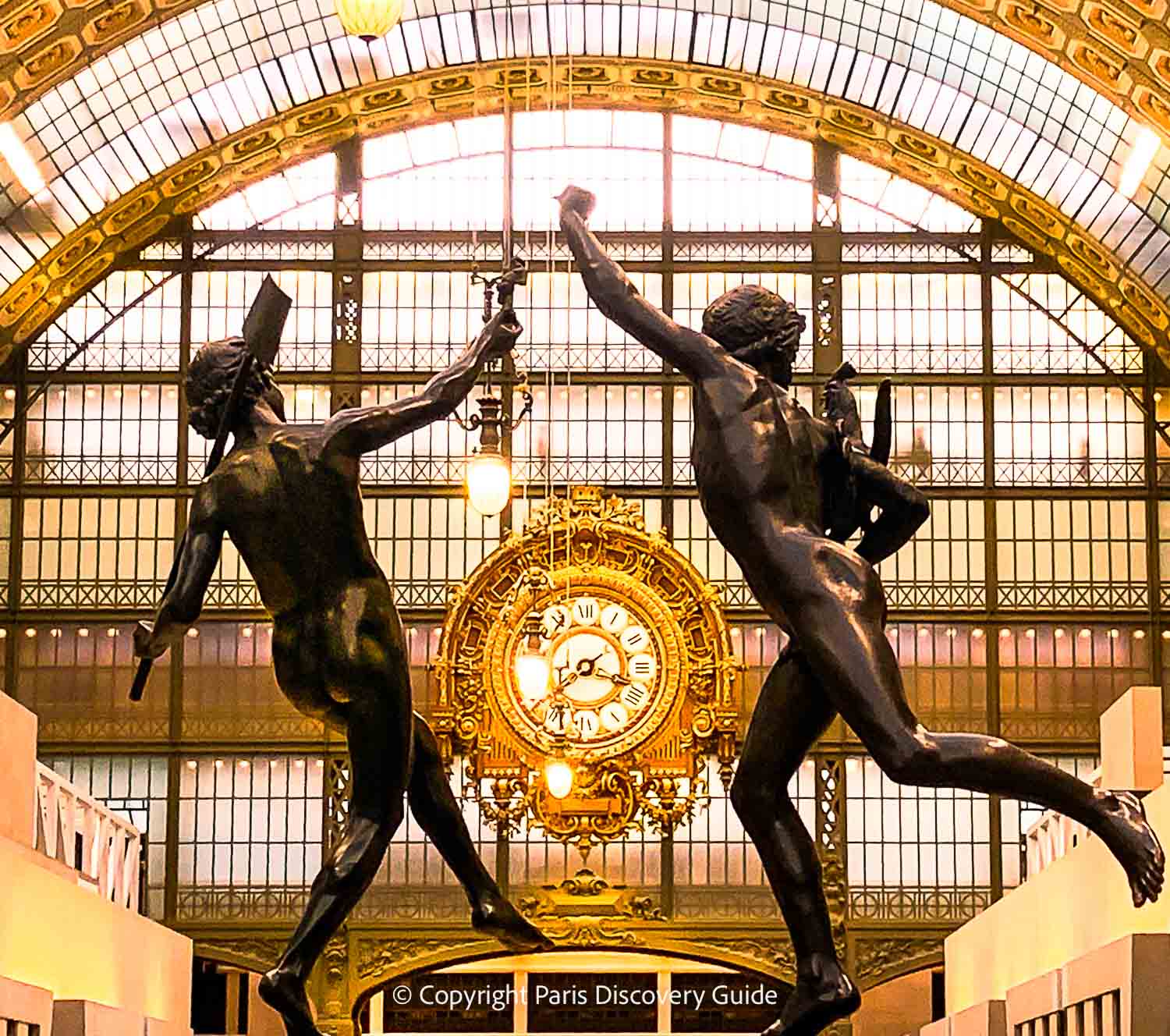
One of the glass clocks is also relatively easy to find if you have lunch in the brasserie on the museum's 5th level, where the clock forms one of the restaurant's walls.
But unfortunately, tables next to the clock serve to discourage close-up poses.

The third glass clock is where you will get the best photos as well as spectacular views of the Seine and the Right Bank. This is the one you've probably seen in numerous selfies - but finding it is not so easy unless you know where to look.
Here's how to find it. Head to the end of museum away from the entrance, and go up to the 5th level. Depending on whether you take the stairs, escalator, or elevator, you'll emerge in a slightly different place. Regardless of where you emerge, walk toward the side of the building facing the Seine where the galleries are located, and you'll spot the clock near the corner.
The views and photo opps are 100% worth the search!
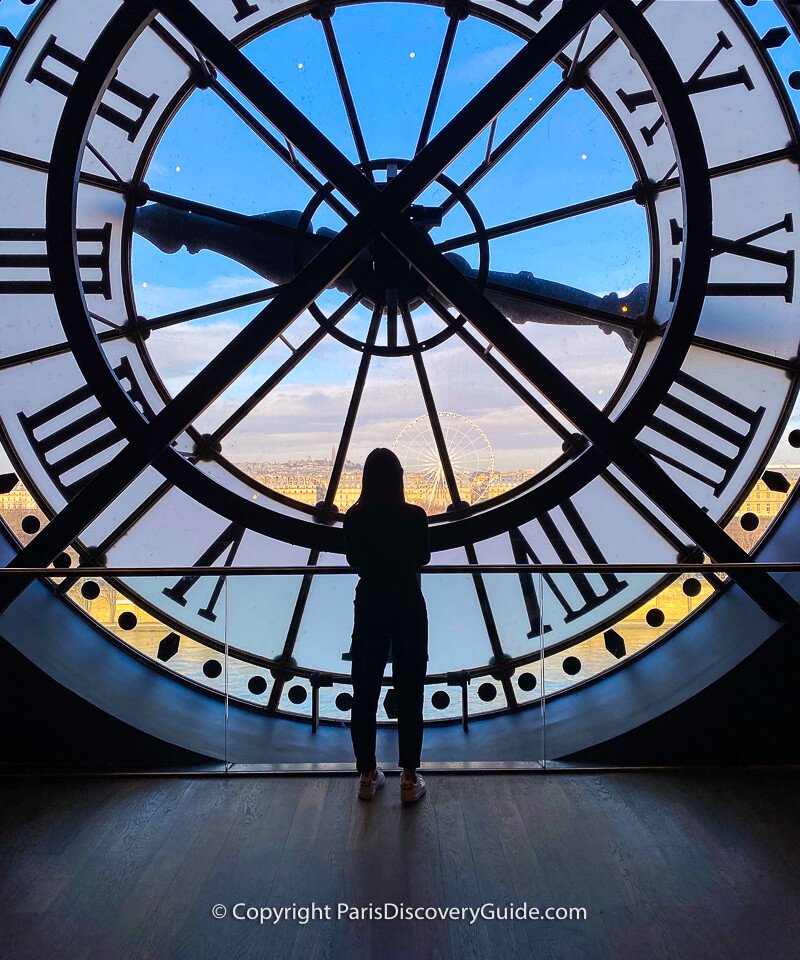
6. Check Out Musée Orsay's Special Exhibits
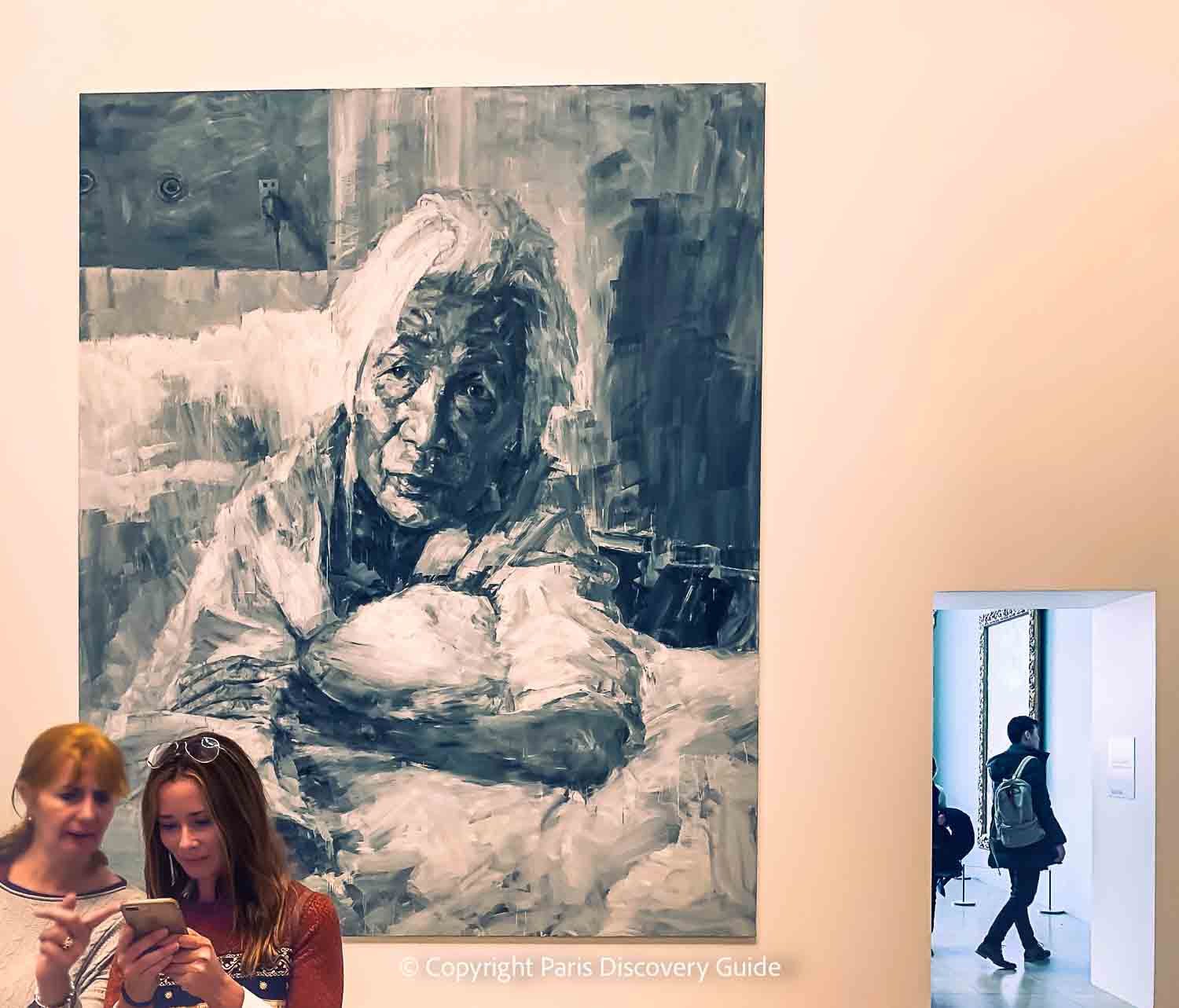
The Orsay Museum presents several special exhibits each year - sometimes a deep dive into an artist's body of work, such as a previous blockbuster Van Gogh exhibit, sometimes an exploration of a particular theme, and occasionally a close look at an interesting contemporary artist.
Your ticket to the museum includes these special exhibits along with the regular collections, and they are almost always interesting - so be sure to look for them while you're there!
Find current and upcoming exhibitions at Musée d'Orsay
7. Enjoy a Drink and Awesome Views on the Orsay's Almost-Secret Summer Terrace
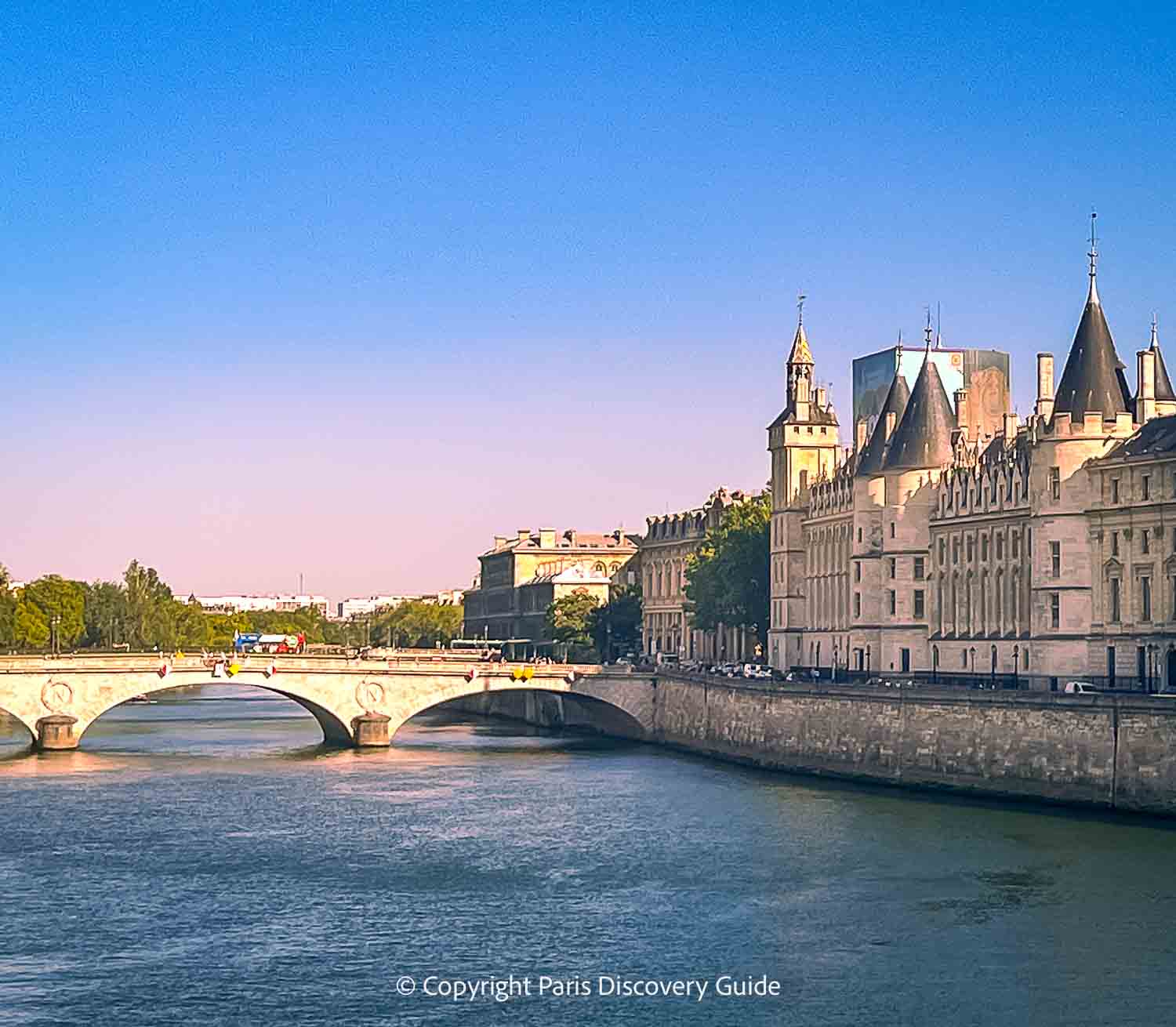
One of the Orsay Museum's best-kept secrets is its Terrasse d'Été - Summer Terrace - perched high above the city with lovely views of the Seine River, the Louvre, and in the distance, even Sacre Coeur perched high on its hill in Montmartre.
To find it, use the escalator, elevator, or stairs near the museum's entrance and go up to the 5th floor. Follow the signs to Cafe Compana.
Next to its entrance, you'll see a narrow passage to the right that leads to the terrace and a small snack bar where you can buy drinks and pastries. Bask in the sunshine while you relax and enjoy the views!
How to Visit & Tour Musée d'Orsay
Should you visit the Orsay if you don't have an advance ticket or place in a tour? I do not recommend it due to the long and slow-moving lines.
Here's my "cheat sheet" to the best ways to experience the Orsay:
Best Guided Tours
An expert guide shows you the most important exhibits and brings the art to life for you.
The guides are usually quite good at getting you up close to the most famous (and most crowded) paintings and making sure you don't miss anything.
My favorites (all include skip-the-line tickets):
- Best of Orsay Museum Small Group Tour - See the most famous art, learn a little about politics and art during the late 19th/early 20th centuries, and find out how the Orsay Rail Station turned into a museum
- Musee d'Orsay Guided Tour - Similar to the above tour - but slightly longer and also includes some hidden gems
- Musee d'Orsay Masterpieces Guided Tour - Choose between a small-group experience or a larger group tour
Skip the Line Tickets
- Reserved access tickets - Priority admission (you skip the long ticket line) - these sell out so book at least a week in advance
- Reserved access tickets with audio app - Priority admission plus an audio app
- Paris Museum Pass - You get free skip-the-line admission to the Orsay plus around 60 other Paris attractions such as the Louvre, Versailles, and Arc de Triomphe; choose a 2, 4, or 6 day pass
See the Orsay from the Outside
- Best of Paris Bike Tour - If you want to see the Orsay Museum (and other top and lesser-known Paris sights) from the outside only and hear interesting stories about them from your knowledgeable guide while biking through the city, this is the tour for you!
Please Note:
Admission to the Orsay is free (with proof of eligibility) to all visitors under 18 years old, EU citizens (or long-term residents) between 18 and 25 years old, and people with disabilities and their companion.
Orsay History: From Belle Époque Train Station to Top Paris Museum
Musée d'Orsay occupies a former train station, Gare d'Orsay, built within a two-year time period for Paris's Universal Exhibition in 1900. The station showcased the first world's first electrified city rail terminal, and served as the arrival and departure point for destinations southwest of Paris - you can still see the names of these cities and towns written across the front of the building.
In addition to 16 tracks and other infrastructure related to train operations, the building also included a 370-guestroom luxury hotel at the southwestern corner of the building which continued operating until 1973.
Although the hotel no longer exists, you can (and should) visit the hotel's grand Belle Époque restaurant, now called Le Restaurant, and see the glamorous crystal chandeliers and elaborate gilded and painting ceiling and walls.
Advances in technology soon resulted in longer electric trains, making the station obsolete for long-distance runs due to its too-short tracks. By 1939, it could be used only for shorter suburban trains.
At that point, the station became the proverbial "cat with 9 lives" as it served as a mail depot during World War II, an exchange center for war prisoners, a film set, a city parking lot, a storage site, a temporary auction house, a vaudeville theatre, and a pop-up exhibition center.
In the end, preservationists prevailed. Permission to tear down the station in order to build a large international hotel on the site was denied in 1971, and within a few years, plans were underway to transform the space into a museum focused on art from 1848, cut-off for the Louvre, through 1914, where Centre Pompidou begins.
The new museum opened to rave reviews on December 1, 1986 and its collections and popularity have grown ever since.
Which is Better - Musée d'Orsay or the Louvre?
Which museum should you visit?
The Louvre Museum, a former palace of French kings and queens, is not only the world's largest art museum in terms of space but it also has some of the world's most famous (and valuable) art: Da Vinci's Mona Lisa, Venus de Milo, and the Winged Victory of Samothrace, just to name a few.
The Louvre is also the world's most visited museum, with almost 9 million visitors last year and up to 30,000 each day that it's open - most of them, you would swear, trying to crowd all at once into the gallery where the Mona Lisa is on display. Good luck if you want to do more than see it from a distance.
So while the art is certainly spectacular, the visitor experience often falls short. There's also a lot of walking involved to get from one area to another.
The Orsay, housed in a former train station, has a much smaller footprint and gets under 4 million visitors per year.
That's still a lot of people crammed into a limited space, but whereas Louvre visitors tend to crowd around the three most famous artworks and leave the rest of the museum (aside from the glass pyramid central atrium) relatively uncrowded, Orsay visitors are more evenly disbursed throughout the painting galleries. The effect, therefore, is not quite as suffocating. That means you can actually view, contemplate, and enjoy the Orsay's masterpieces.
Another big difference is the art itself. The Orsay's focus is on Impressionist and Post-Impressionist paintings, many of which depict romanticized views of the world: Caillebotte's paintings of Paris's grand boulevards in autumn, Van Gogh's Starry Night, Mary Cassatt's emotional portrayals of fashionable women and children, even Degas' paintings of ballerinas. They resonate with our 21st century sensibilities.
So if you're trying to decide which museum to visit, the Louvre or the Orsay, ask yourself: What kind of viewing experience do you want? What kind of art do you enjoy the most?
Let your answers guide your choice.
Fun Musée d'Orsay Facts & FAQs
Fun Facts
- The Orsay Museum's huge vaulted ceiling contains more metal than the Eiffel Tower and almost 400,000 square feet of glass.
- Although the metal framework made the glass ceilings structurally possible, the electric trains - which emitted no steam or smoke - made the use of glass aesthetically possible.
- The building's sides are also constructed of metal, but were faced with limestone to match the Louvre Museum across the river.
- Gare d'Orsay and its hotel opened on Bastille Day, 1900.
- American film director Orson Welles shot his adaptation of Franz Kafka's The Trial here.
Q: How many people visit Musee d'Orsay each year?
A: The museum averages over 3 million visitors each year. For comparison, the Louvre Museum admits about 7.5 million visitors each year (due to the current cap of 30,000 visitors per day).
Q: How large is the museum?
A: Despite being much smaller than the Louvre, the museum's length of 574 feet (175 m) and width of 246 feet (75 m) make it almost twice as long and wide as an American football field. The iron-framed glass roof soars 105 feet (32 m) above the elegant cream-and-black marble ground-level central hall, providing plenty of natural light.
Q: How many floors and galleries does the museum have?
A: There are now around 80 galleries on three levels, plus numerous platforms and pedestals provide additional display space - but a 10-year expansion effort has recently begun, so expect even more space and other changes by 2030.
Orsay Museum Visitor Information: Hours, Location, & Map
Ticket Information
To avoid waiting in a (usually) very long ticket line at the entrance, buy your tickets or tickets with audio app with a reserved time slot online.
To have an expert guide show you the most important exhibits, book a small group tour.
Please note: Admission to the Orsay is free (with proof of eligibility) to all visitors under 18 years old, EU citizens (or long-term residents) between 18 and 25 years old, people with disabilities and their companion, and holders of a valid Paris Museum Pass.
Schedule
Days open: Tuesday through Sunday
Days closed: May 1, December 25, all Mondays
Hours open: 9:30 - 18:00 Tuesday, Wednesday, Friday - Sunday; 9:30 - 21:45 on Thursday
Last admission: 45 minutes before closing
Musée d'Orsay Address & Public Transportation
Location: 1, Rue de la Légion d'Honneur, 7th arrondissement
Metro: Line 12, Solférino station
RER C: Gare du Musée d'Orsay station
Bus: Lines 21, 27, 38, 85, 96
Batobus: Batobus - Get Batobus hop on hop off river cruise tickets
Map Showing Musée d'Orsay Location
Things to Know Before Your Visit
- The Orsay Museum is wheelchair accessible, and loaner wheelchairs are available.
- Free priority admission for disabled visitors and accompanying person is available upon presentation of proof of disability (usually at Entrance C, but check signs on the day of your visit).
- Due to security considerations, suitcases, backpacks, and travel bags must be smaller than 56 x 45 x 25 cm (22 x 17.8 x 9.9 inches). You may leave them in the cloakroom if space is available; otherwise, the cloakroom is restricted to objects not allowed in the museum areas.
- Once you leave the museum, you can't re-enter with the same ticket.
- Plan to spend about 2 hours at Musee d'Orsay if you want to see only the Impressionist and Post-Impressionist collections, and 3-4 hours if you want to see the Special Exhibits and some or all of the other art. If you opt for lunch at either of the two main restaurants and do a traditional 3-course meal, count on another couple of hours for that. If your goal is to see the museum's most famous pieces and learn a little about them without spending at least half a day here, do consider one of the efficient 2-hour guided tours. In addition to providing lots of interesting information, the Orsay Museum guides help you move quickly through the crowds and secure a good viewing spot in front of the art.
Fun Things to Do in Paris Near the Orsay Museum
Where to Stay near the Orsay Museum
The upscale 7th arrondissement near Musée d'Orsay offers you a wonderful base for your Paris visit, close to numerous museums, historical churches where you can hear classical concerts, superb shopping, and wonderful places to eat. Here are several excellent choices within a 10-minute walk:
- Hotel de Varenne - Charming 4-star boutique hotel with a secluded garden close to Musée d'Orsay, the Rodin Museum, the Eiffel Tower, and the Seine RIver - we loved our own stay at this tranquil spot
Book best deals - Hôtel de Lille (40 Rue de Lille) - Lovely 4-star boutique hotel surrounded by wonderful restaurants in a fantastic 7th arrondissement location near the Orsay, the Louvre, and the Seine River
Book discount deals - Hôtel Montalembert - Excellent 5-star boutique hotel in Saint Germain de Prés near museums, the Bon Marché luxury shopping complex, and numerous small boutiques and antique shops
Find best rates
Want more ideas? Check out:
- Hotels near the Eiffel Tower
- Best Hotels in Paris's 7th arrondissement
- Saint-Germain-des-Pres Paris Hotels
Find More Paris Hotels & Apartments near the Orsay
Use this Paris hotel map to find more accommodations near Musée d'Orsay. Add your travel dates to see what's available and find best rates:
Booking.comCheck out the newest Paris hotels
Where to Eat In & Near Musée d'Orsay Museum
Choose from three places to eat inside the museum:
- Le Restaurant - Beaux Arts jewel with gorgeous crystal chandeliers and Seine River views that opened in 1900 as the formal dining room of the luxury hotel located within Gare d'Orsay; menu choices feature traditional French food
- La Campana - Brasserie-type food such as big salads, soups, burgers, quiche, steak-frites, and pasta; try the gourmandises option for dessert to sample a few different pastries
- Le Café - Drinks and snacks on the 5th level Summer Terrace
Outside of the museum, you can find several very good small bistros along nearby Rue de Solferino and Rue de Bac. Check out the menus posted by their doors and choose the one you like the best. It's hard to go wrong in this neighborhood!
More to See & Do near the Orsay
Explore the Orsay's neighborhood, home to famous artists, writers, jazz clubs, and fabulous boutiques and restaurants, on these fun tours:
- Chocolate & Patisserie Walking Tour through Saint Germain - See the neighborhood's famous art galleries, boutiques, and passages as you enjoy pastries, macaroons, and chocolates at 8 tasting stops - Book now
- Charming Nooks & Crannies Bike Tour - Ride through Saint Germain des Prés, the Latin Quarter, the Marais and other fascinating neighborhoods as you pass famous sights and hidden gems - Book now
More Articles about Top Places to Visit in Paris
- What to expect on a Louvre Museum guided tour
- Find out about Sainte Chapelle's gorgeous stained glass classic candlelight concerts
- Paris Museum Pass - How much money and time can you save with it?
- Where to find best views of the Paris skyline
- Find out about Île de la Cité's medieval attractions in the heart of Paris
- How to get fast entry to top Paris attractions with skip-the-line tickets
- Easy day trips from Paris to Versailles, Giverny, Mont Saint Michel, D-Day Normandy Beaches, Disneyland, London, Bruges, & more


